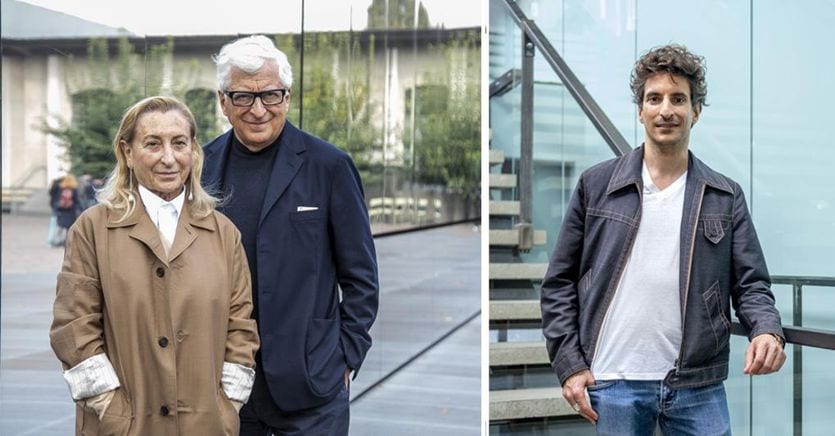75.8% of Italian fashion companies with a turnover of over 20 million euros a year are family-owned. A figure that rises to over 80% if the focus is narrowed on companies with revenues between 20 and 50 million euros. The percentages that emerge from the data extraction of the Aub Observatory on family businesses (Aidaf, UniCredit, Bocconi), made exclusively for Il Sole 24 Ore, are clearly higher than the national average: family-owned businesses in Italy, in fact, they are 65% of those with revenues exceeding 20 million euros. Those of the fashion system are also the family-controlled realities with the oldest governance: the leaders over 70 are 3 out of 10, a figure higher than the Italian average. And those over 50 are only 11%, against about 18% of the national sample. Therefore, the generational transitions are delayed.
The identikit
In general, the family businesses of Italian fashion, 587 out of a total sample of 774 companies, achieve 43.1 billion euros in revenues and therefore 60% of the total turnover (71 billion euros) and employ 168,900 people. According to the analysis of the Aidaf, Bocconi and Unicredit Observatory, also supported by Borsa Italiana, the Milan Chamber of Commerce and the Angelini Foundation, family-owned companies in the Italian fashion system are mainly active in clothing (68.1%). followed by footwear (12.9%), jewelery and watches (10.6%) and bags (8.3%). At a geographical level, families control fashion companies above all in Lombardy (30.2%), where there is the highest concentration in Italy also of non-family-controlled fashion companies (44.4%), and in Veneto ( 22.1%). «In the fashion system we find a percentage of family-owned companies much higher than the national average – explains Fabio Quarato, professor at Bocconi and managing director of the Aidaf-EY chair of Strategy of family companies in memory of Alberto Falck – because, as happens in all the creative industries, there is a strong component linked to the founder and the entrepreneur. However, these are solid and profitable companies that have what it takes to increase their competitiveness. Perhaps starting from the inclusion of external managers, to then arrive at opening the capital or listing».
performance
The turnover growth rate, i.e. the growth calculated on sales revenues (source Aida), shows how, taking the 2010 figure as 100, the 2021 revenues of family fashion businesses were lower (212) than both national (243) – which instead in the pre-Covid period (years 2018 and 2019) were almost equivalent – and to those of fashionable non-family members (291). From the data of the Aub Observatory it emerges above all how about ten years ago there was a clear difference between the performance of family and non-family companies in Italian fashion. Non-family members of the fashion sector have recorded a more rapid increase: the “detachment” period is 2013-2014 when the revenues of companies with “external” control have risen by 16% against 10% of family members. Perhaps thanks to the better ability to manage important challenges that were imposed on fashion companies precisely at that time: globalization, e-commerce, investments in retail.
The data from family businesses, however, are better in terms of profitability: in 2021 the ratio between operating income and equity (Roe, source Aida) was 13.4, against 3.6 for fashion non-family businesses, while the ratio between operating income and invested capital (Roi) is 9.1 against 7.4 for non-family members. In both cases, family businesses have exceeded pre-Covid profitability levels. «Certainly in the past family businesses have lost competitiveness compared to non-family ones, which we recall are mostly Italian branches of foreign groups – explains Francesco Casoli, president of Aidaf – but today they are healthy companies, ready to make mergers. The fact that they have made fewer investments than non-family members is not negative: fresh money and stability are needed to reorganize governance”.
Families between tradition and future
Family capitalism has been for decades, and still is, a distinctive feature of the made in Italy fashion system. But something is changing, starting with the big names. Of the big names in Italian fashion with turnovers exceeding one billion euros, only a few companies have remained in the hands of the founding families: Giorgio Armani, Otb and the Calzedonia Group are among the unlisted; Zegna, Ferragamo, Tod’s and Prada among the listed companies. Thanks to the ongoing generational changeover, at the beginning of 2023 Prada gave an important signal: it called for the first time an external top manager – Andrea Guerra – to fill the position of CEO, previously shared by Miuccia Prada and Patrizio Bertelli. A choice, that of entrusting the management to people outside the family, already made by other groups such as Otb and Ferragamo. And from smaller companies like Herno, which a few days ago appointed Gabriele Baldinotti as CEO, or Fabiana Filippi who chose Aldo Gotti in January.
